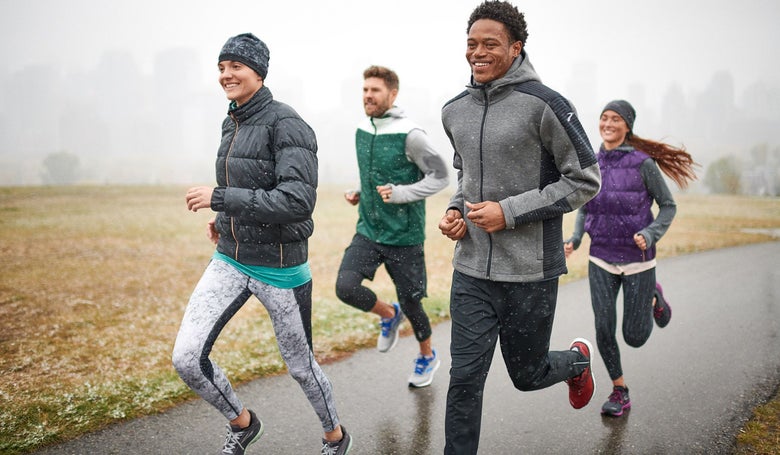How to Layer for Running in the Cold: Top 4 Tips
Check out our helpful guide on the best way to layer for running in the cold winter season
Updated: October 1, 2024 by Caroline Cross

As Alfred Wainwright once wrote: "There's no such thing as bad weather, only unsuitable clothing." Running in the wintertime can still be enjoyable with the right gear. When it comes to winter accessories, you have the appropriate headwear to protect your ears and gloves/mittens to keep your extremities toasty from frostbite. But how many layers of clothing are suitable to wear while running in cold weather? Striking the perfect balance of not overdressing (which results in overheating) and not underdressing (leaving you freezing) can be tricky. Since your body generates heat as you actively move, the consensus is to dress 10 to 20 degrees warmer than the outside temperature making sure to account for the wind chill factor. Whether your body naturally runs cold or warm, you may need to experiment with what works best for you and find your happy medium. We have highlighted our top tips on how to layer appropriately on winter runs to ensure you stay dry, warm, and comfortable, no matter the elements.
Tip #1: Wear a Moisture-Wicking Base Layer

Let's start with the basics by first wearing a base layer top. Since the base layer is closest to your skin, it should be soft, light, and made from synthetic, moisture-wicking fabric. The base layer's primary function is to prevent excessive sweat saturation, which can lead to discomfort and hypothermia. During freezing temperatures, some runners may wear two base layers (such as a compression top or shirt under a long sleeve shirt or half-zip). Long sleeve shirts with thumbholes are ideal for holding the sleeves in place and keeping the cold air out, and to reduce any draft, tucking in the base layer under your running tights or pants provides added warmth and protection.
Tip #2: Zip into an Insulating Layer

Next, you need an insulation layer of clothing over your base layer to keep you warm. When the temps are not cold enough for a jacket but not warm enough for just running solo with a long sleeve shirt, a running vest strikes the perfect balance. A running vest will keep your core warm while allowing complete freedom of movement for your arms. With the shorter daylight hours in the wintertime, incorporating a hi-vis vest with reflective elements and reflective gear also helps keep you safe.
Tip #3: Throw on a Weather-Protective Outer Layer

A running jacket offers the ideal combination of insulation and breathability, making it the perfect outer layer that functions as a barrier, keeping the cold and wind from creeping in. Most running jackets feature draft flaps and perforations for ventilation, allowing moisture to escape (so you remain dry and comfortable) while allowing for airflow (so you don't overheat as you break a sweat). Some brands offer body-mapped thermal insulation to keep you warm, while others have mesh lining for lightweight, breathable coverage. When running in the frigid cold, select a full-zip jacket with a waterproof shell to keep the snow and rain from soaking in through your base layers. On a blustery day, a hooded windbreaker with wind-resistant fabric offers optimal protection. Some jackets are also packable, which allows you to shed and store your outer layer if your run heats up or the weather clears up. Use our filter "packable" when exploring our selection of men's and women's running jackets.
Tip #4: Put On Layered Bottoms

Lastly, for additional warmth and protection, wear technical running tights under your linerless running shorts. Full-length and 7/8 tights offer leg coverage and support your muscles by keeping them warm, preventing injury. In frigid temps, choose a fleece-lined tight to reduce any draft from seeping in. Learn more about the benefits of running tights and their various design features in our article on How to Choose a Running Tight.










